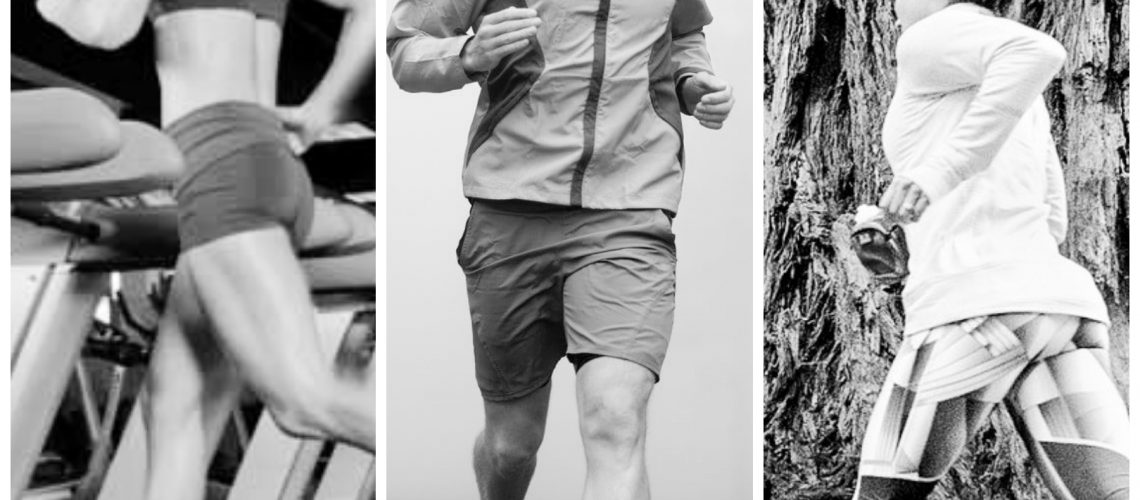As the weather is getting warmer outside and running season commences, we often get asked what’s the best surface to run on: treadmill, pavement, or a trail? Although there are differences in biomechanics, ground reaction forces, and musculature used when running on different surfaces, there isn’t a “best choice”. It all depends on your personal preference, goals, and injury considerations!
Stride length and biomechanics
Since a treadmill belt facilitates leg turnover, research suggests that treadmill running promotes a shorter stride length compared to running over ground on pavement or a trail. This suggests that outdoor running better mimics a natural gait cycle compared to treadmill running. A shorter stride length changes the biomechanics of running affecting the angle at which your ankle lands, the bend of your knee, and the amount your hip flexes. However, because the treadmill assists in leg turnover, it is easier to run faster on a treadmill compared to outdoor running. So, if your goal is to run faster, it’s beneficial to add speed intervals on a treadmill in your running routine.
Ground reaction forces (GRF) (shock absorption)
Treadmill belts are designed to absorb shock, which means there is less stress on your joints with every stride you take. Treadmill and trail running are similar in their ground reaction forces since trails are often mud and grass which is more forgiving compared to pavement. If your goal is to run long distances, then it may be wise to run on a surface that decreases the ground reaction forces through your joints. On the flip side, pavement running loads the bones which contributes to increased bone density over time.
Energy expenditure (calories burned)
Due the variable nature of running on pavement and trails, more muscles are activated through the foot, ankle, knee and hip. Treadmill running is predictable, each stride doesn’t vary much with regards to biomechanics. The same stress is put through the ankle, knee, hip and low back with every stride you take. Every stride on your pavement or trail run is variable depending on the incline or decline of the surface, the smoothness of the surface, and the obstacles you encounter. Trail running offers the most amount of variability and requires the most amount of proprioception and activation of all muscles in the lower extremity. Due to the variable muscle requirement, pavement and trail running result in greater energy expenditures (calories burned) compared to treadmill running when running at the same tempo. However, research suggests that you can make up this deficit by adding a 1% incline on the treadmill.
Psychological benefits:
Running outside in nature boosts mood, lowers stress hormones, and exposes you to vitamin D (if the sun’s out). Outdoor running leaves you more stimulated and can seem less boring.
Summary:
| BENEFIT | TREADMILL OR PAVEMENT OR TRAIL |
| Natural gait cycle | Pavement and Trail |
| Speed training | Treadmill |
| Shock absorption (long distance running) | Treadmill and Trail |
| Bone density | Pavement |
| Calories burned | Pavement and Trail |
| Muscle variability | Pavement and Trail |
| Proprioception (balance training) | Trail |
| Mood boost | Pavement and Trail |
| Environment control | Treadmill |
Our advice is to run on variable surfaces to reap all the different benefits that treadmill, pavement and trail running offer!
References:
Van Hooren, B., Fuller, J.T., Buckley, J.D. et al. Is Motorized Treadmill Running Biomechanically Comparable to Overground Running? A Systematic Review and Meta-Analysis of Cross-Over Studies. Sports Med 50, 785–813 (2020).

